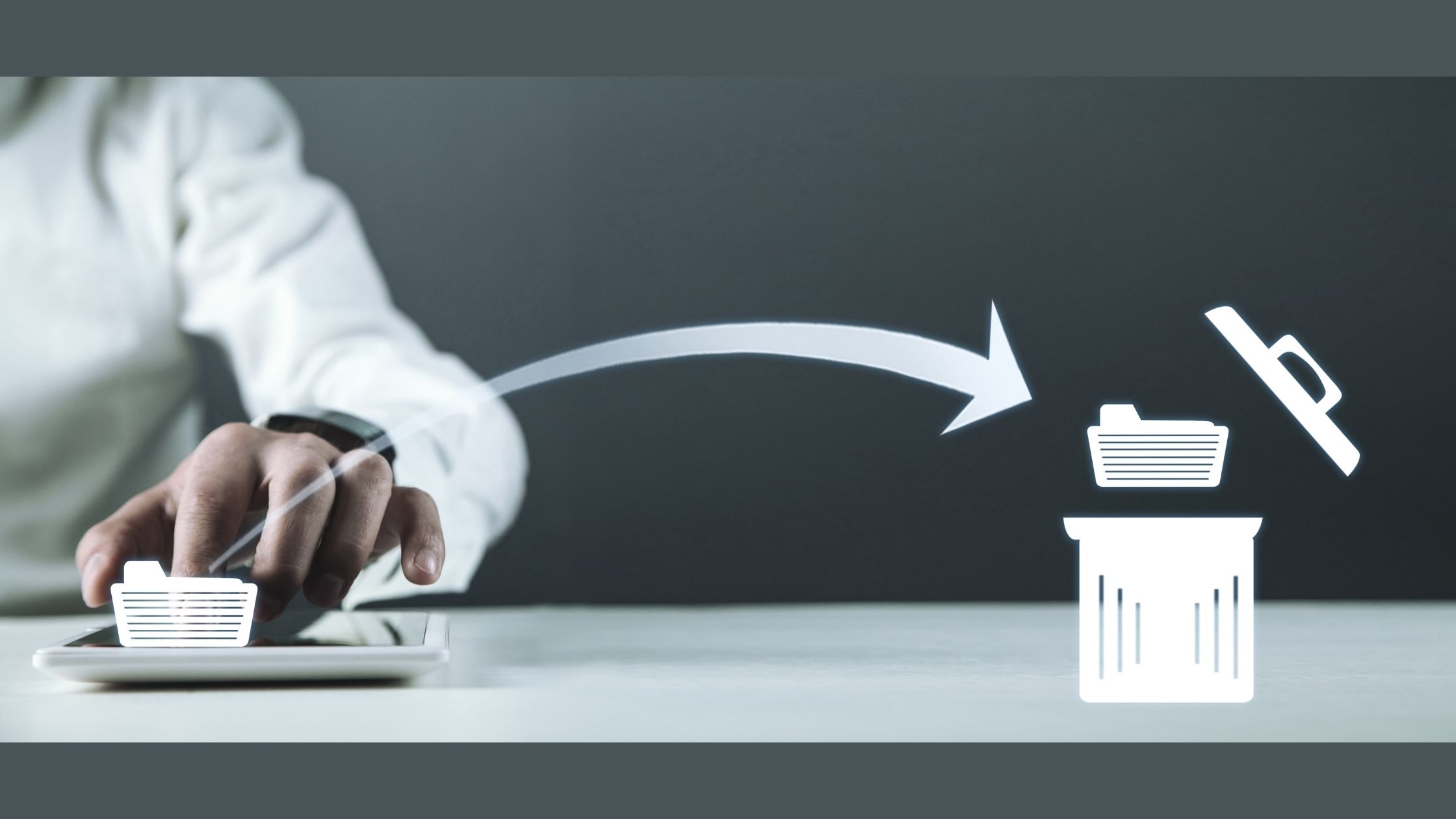
Got IT issues slowing you down? We provide both on-site and remote support across Australia, so help is never far away.
It’s easy to assume that once you delete a file, it's gone for good. But in reality, it’s not that simple.
When you send a file to the Trash or Recycle Bin, it doesn’t immediately vanish from your hard drive. Instead, it is moved to a temporary location and stays there until you manually empty the bin. Even after that, the file's data still exists on your hard drive - it’s simply marked as space available for new data to overwrite.
This process can confuse people who aren’t familiar with how operating systems manage files. When a file is deleted, the system just removes the "label" from the file system. Think of it like removing the title from a VHS tape - the content remains, but it's harder to find.
This means deleted files can often be recovered using data recovery software - unless that space has already been used for something else.
Understanding this can help you manage your data more effectively, especially when handling sensitive files. If you’re serious about making sure private data is permanently removed, extra steps are required beyond the standard delete command.
To recover deleted files, you’ll need data recovery software that can scan your hard drive and identify data marked as “available” but not yet overwritten.
These tools search for disk sectors containing data that aren’t currently assigned to active files. They then try to piece those data fragments back together into a usable file. Success depends on how recently the file was deleted and whether new data has since overwritten the same area.
File recovery isn’t foolproof. If the data has already been overwritten - even partially - the original file may be damaged or lost completely. You might recover some files in perfect condition, while others return incomplete or corrupted.
Given that recovery is hit-or-miss, having regular data backups is your best defence. Whether you use cloud services or external drives, backups allow you to restore critical files even when recovery fails.
At BIT365, we recommend setting up automated cloud backups for both individuals and small businesses, especially across Western Sydney suburbs like Parramatta, Campbelltown, and Blacktown.
Different devices and operating systems treat deleted files in different ways.
If you want to ensure a file is truly gone, simply emptying the bin isn't enough. Secure deletion overwrites the data multiple times, making it nearly impossible to recover. This is crucial when dealing with personal or business-sensitive files.
Storage type matters. Solid-State Drives (SSDs) use TRIM commands to manage deleted data, which can make traditional recovery techniques ineffective. Hard Disk Drives (HDDs), however, are more susceptible to recovery unless securely erased.
If you're disposing of an old device or planning an upgrade, knowing the storage type can help you take the right precautions.
If you need to delete files securely - especially sensitive business or personal information - using professional data erasure tools is the best option.
These tools not only delete the files but overwrite the space they occupied, sometimes multiple times, making it nearly impossible for anyone to recover the data.
Here are a few tips to maintain data security across your devices:
Understanding what happens to deleted files can empower you to make smarter choices about your digital security. Whether you're a home user in Wetherill Park or a small business in Campbelltown, knowing how to recover - or securely destroy - your data is essential.
If you’re unsure about how to manage or delete sensitive files safely, or need support implementing a secure backup solution, reach out to the experts at BIT365. We help Western Sydney businesses safeguard their digital environments with professional IT support and data protection services.

Got IT issues slowing you down? We provide both on-site and remote support across Australia, so help is never far away.
BIT365 offers a full range of managed IT services, including cybersecurity, cloud solutions, Microsoft 365 support, data backup, and on-site or remote tech support for businesses across Australia.
No. While we have a strong presence in Western Sydney, BIT365 supports businesses nationwide — delivering reliable IT solutions both remotely and on-site.
We pride ourselves on fast response times. With remote access tools and on-site technicians, BIT365 can often resolve issues the same day, keeping your business running smoothly.
BIT365 combines local expertise with enterprise-grade solutions. We’re proactive, not just reactive — preventing issues before they impact your business. Plus, our friendly team explains IT in plain English, so you always know what’s happening.
